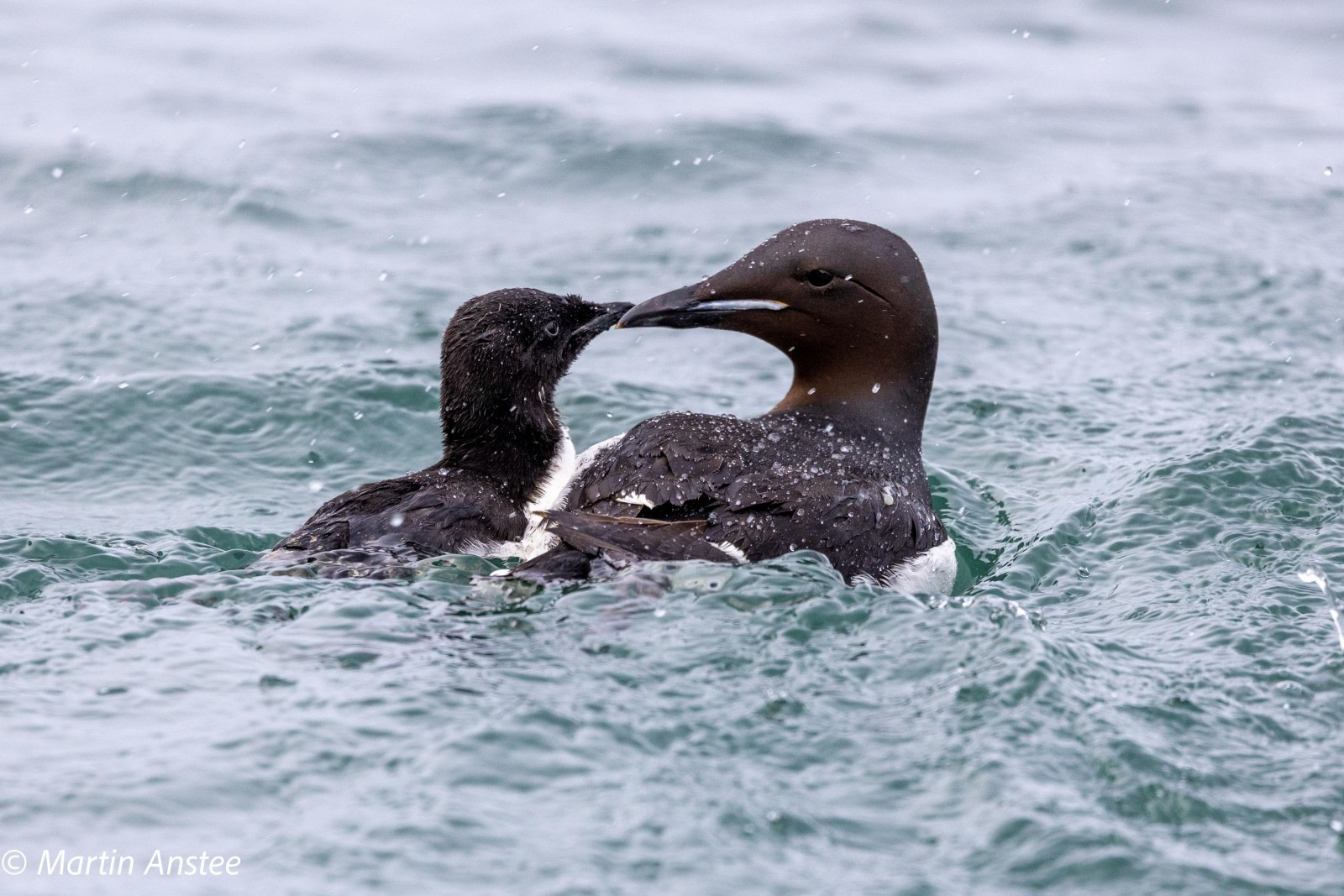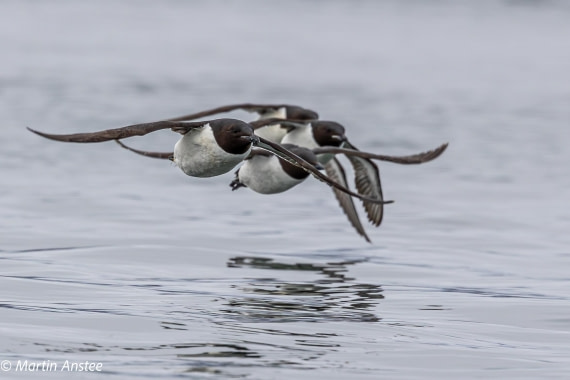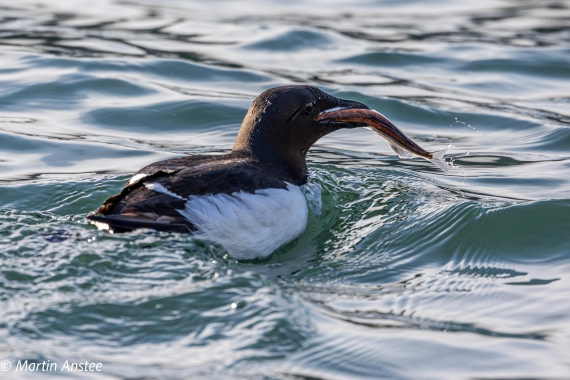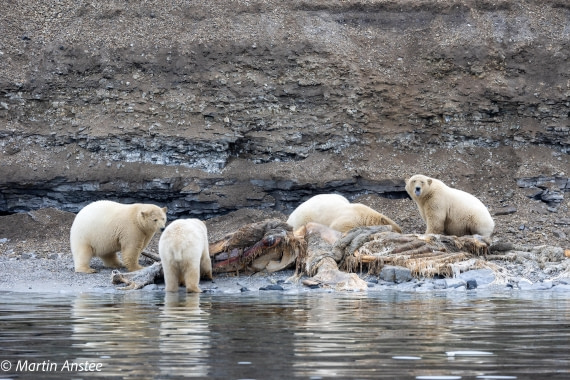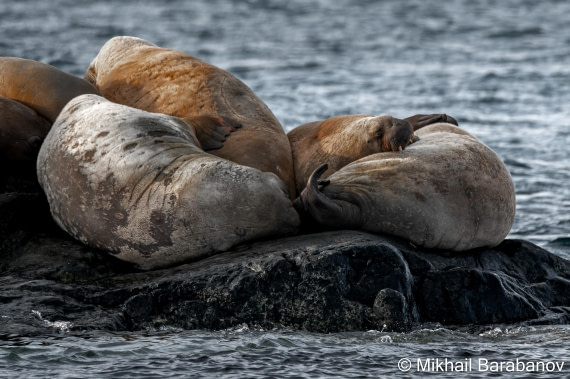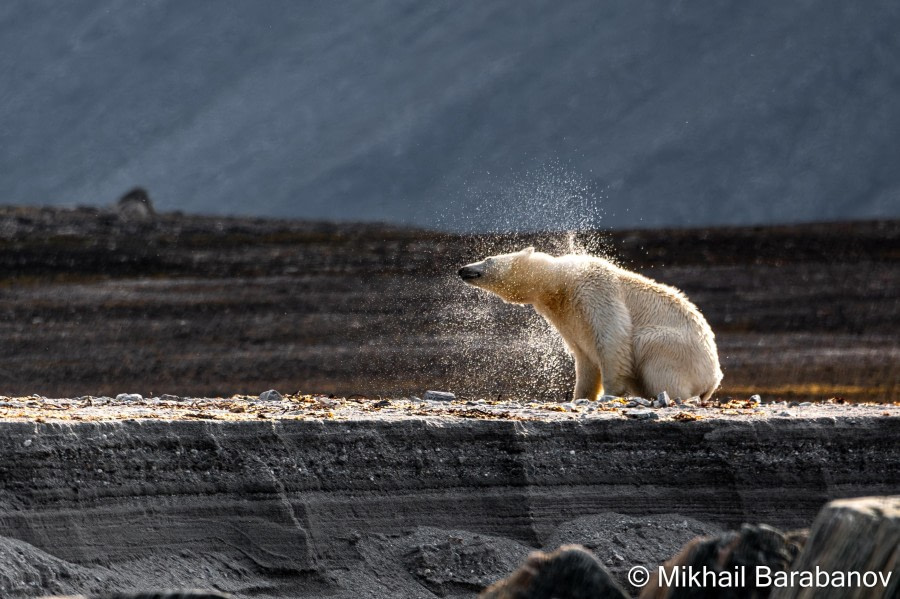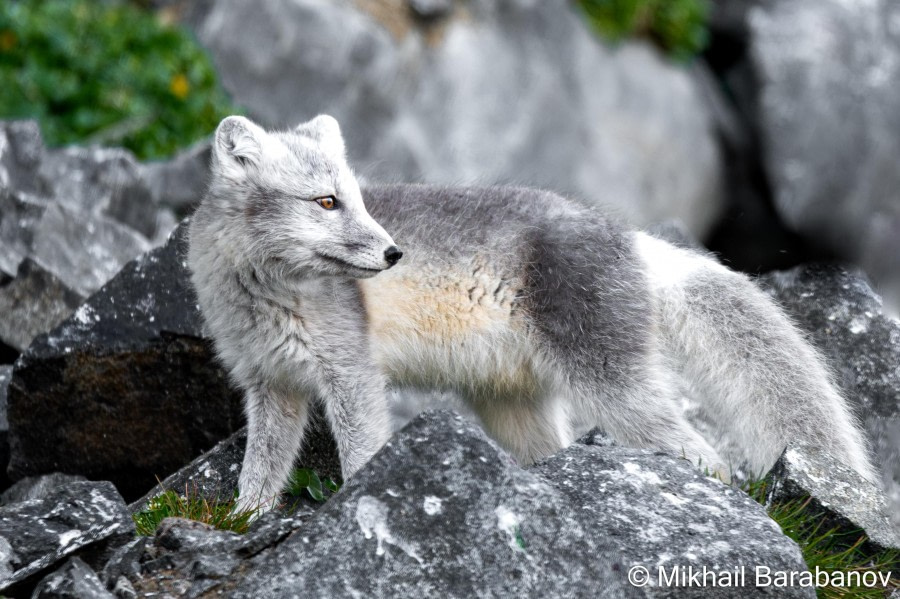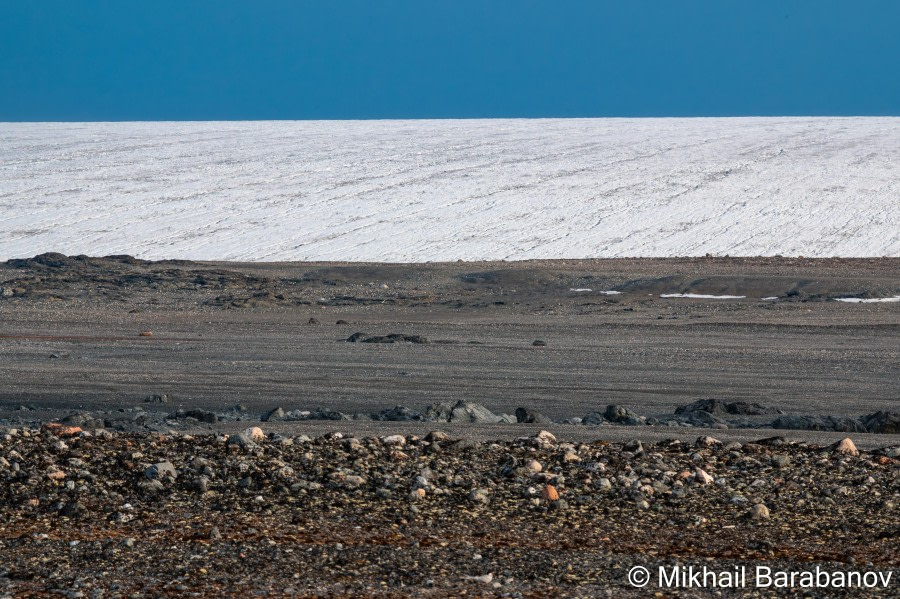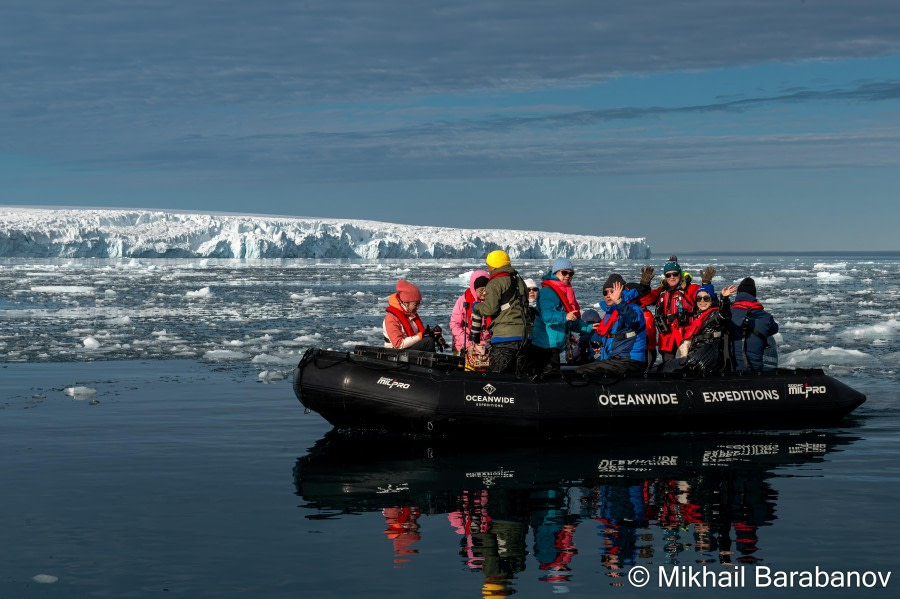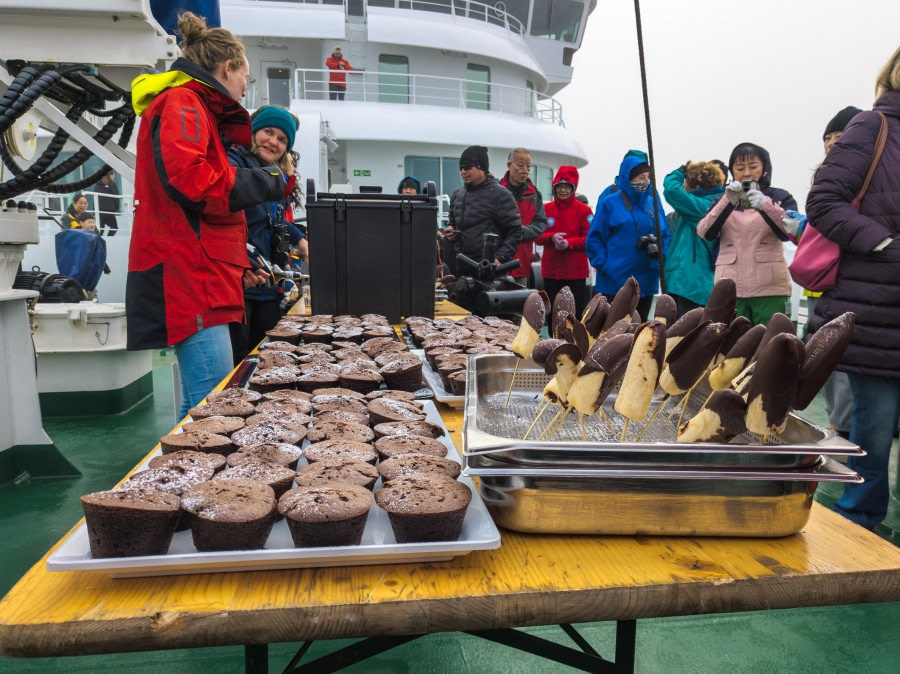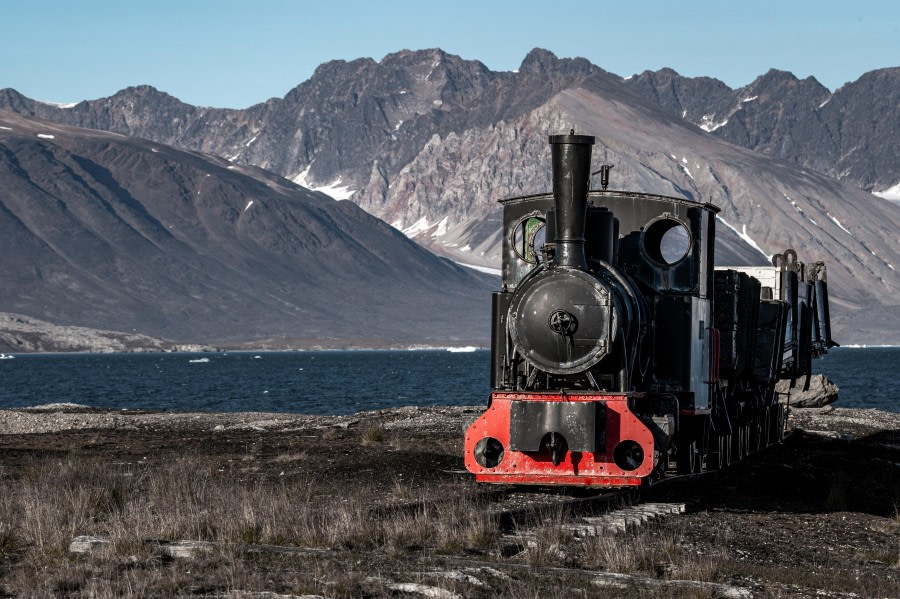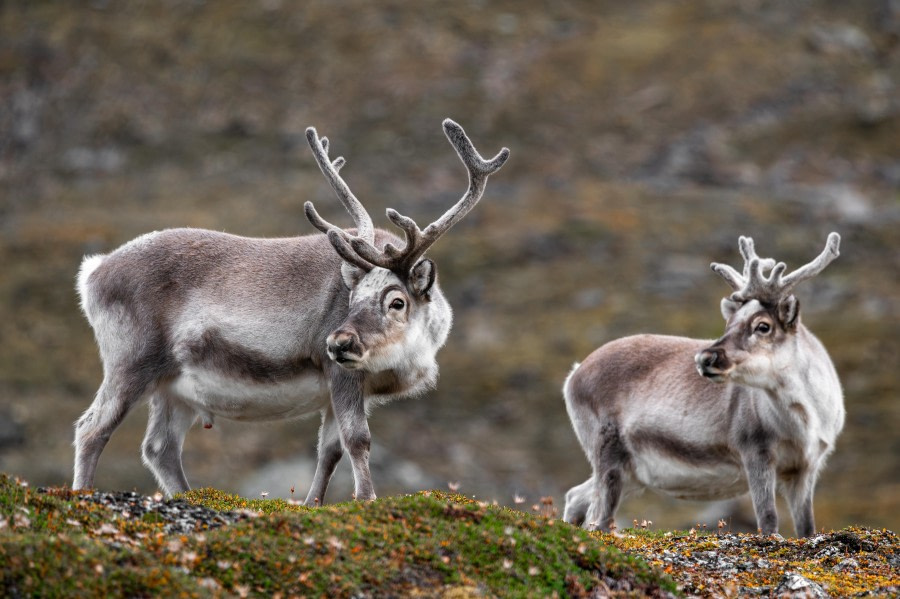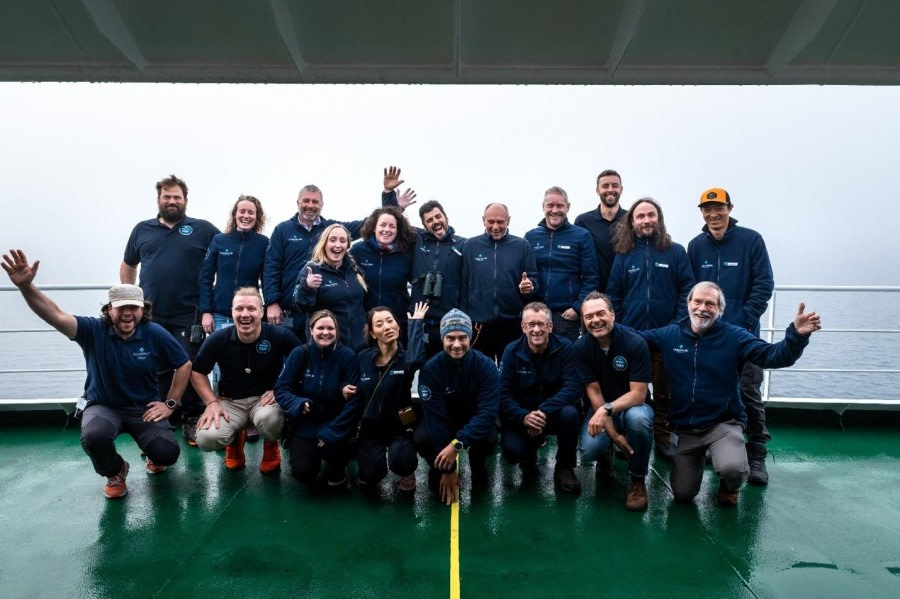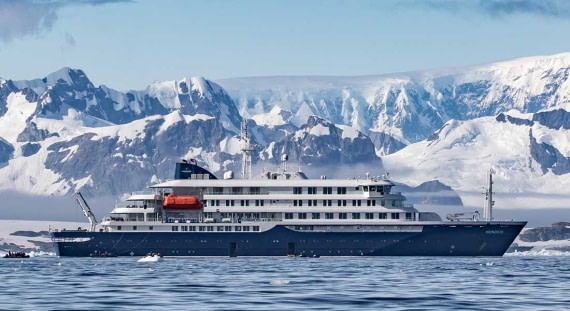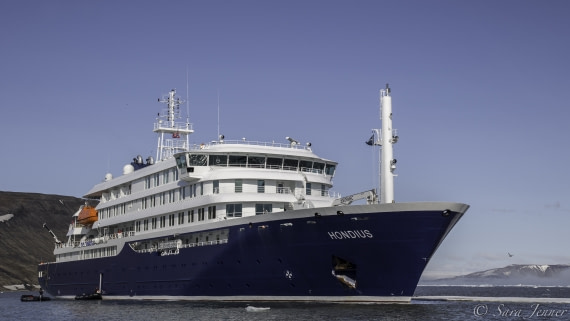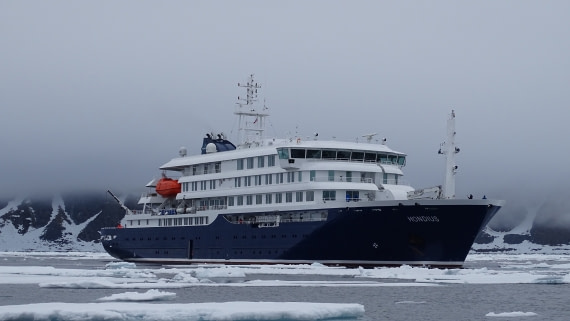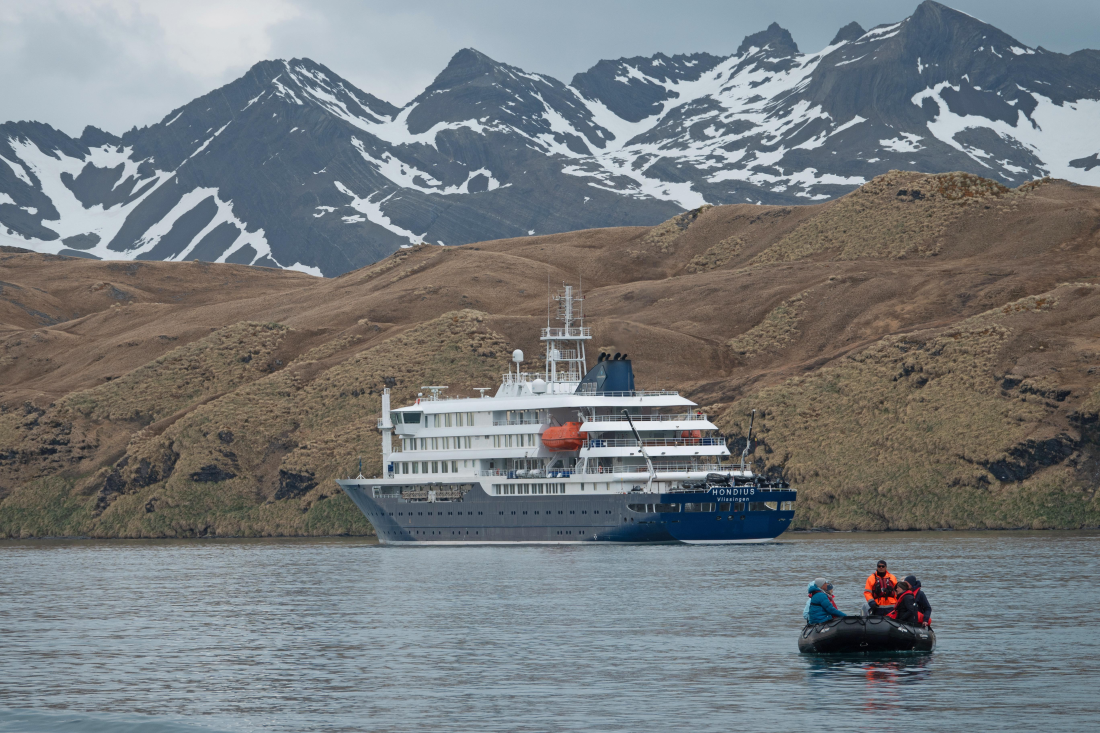| Fecha: |
22.08.2023 |
| Posición: |
80°07.2’N / 028°45.6’E |
| Viento: |
SSW 3 |
| Clima: |
Partly cloudy |
| Temperatura del Aire: |
+3 |
The plans for the day were grand! Each of us, drawing back the curtains and lifting the covers of the portholes, preparing to welcome the bright rays of sunlight into the depths of Hondius, anticipated a joyful day, brimming with adventures. Yet, the scene that met our eyes stirred a sense of bewilderment, for it was truly peculiar: a dense, grey mist enveloped everything around us with a thick shroud, looming over Hondius and robbing us of any sense of spatial orientation. Where are we? Where in the devil are we?
It was as if the Arctic, having second thoughts about how much it allowed us to experience, feel, and see over the past two days, decided to take compensatory measures to balance the course of our journey.
According to the readings from the radar and satellite navigation instruments, Hondius was moving slowly but steadily forward, skirting the southern coast of Nordaustlandet. The fog at times thickened so much that we had to peer closely to distinguish the flag of Oceanwide Expeditions fluttering on the bow. At other times, it slightly dispersed, revealing icebergs slowly bobbing on the waves. These icebergs had broken away from the massive ice dome of Austfonna, which covers a large part of Nordaustlandet. The wind was almost absent. The aforementioned flag occasionally came to life, as if to remind us of its presence, fluttering purposefully, and then it would hang limply, incapable of even the slightest movement.
The waters washing the southern shores of Nordaustlandet were no longer just fjords but an open ocean, and all oceans are known for their swaying motion. The ocean seemed to sleep, wrapped in a blanket of fog, breathing slowly. Inhale-exhale, inhale-exhale... Hondius crawled along its massive body like a lost and hapless ant. On each inhale, Hondius would rise, and on each exhale, it would lower itself, slicing through the water's surface with a sound as its bow moved forward.
During breakfast, still filled with hope, we repeatedly diverted our gazes from our omelettes and yogurts to the outside, wondering if the fog was starting to dissipate. Yet, the fog only seemed to thicken around our ship. The planned morning Zodiac cruise in the area of Isispynten had to be postponed to a later time. The weary Arctic sun reluctantly climbed higher. The fog, as if fearing its tired yet stern gaze, clung even tighter to the ocean's surface, refusing to disperse despite the sun's rays. Above us, the blue expanse of the celestial dome was now distinctly visible, but on the sides, as before, milk-like clouds of tiny water droplets spread out. After waiting a bit longer, the leadership of our expedition made the disappointing decision to cancel the Zodiac cruise. Even if we went, we wouldn't have seen any glaciers, icebergs, walruses, or - oh, the horror! - polar bears. And with that circumstance, there's no room for jests. Well, failures do happen. No big deal, we'll get through it!
Strangely enough, the time before lunch flew by quickly. We listened to lectures delivered by our guides, stepped out onto the open decks to breathe in the fresh Arctic air, and to cast our gaze upon any icebergs that crossed our path.
After lunch, patches of fog began alternating with areas of good visibility. Our ship was headed towards Storøya. It's one of the easternmost islands in the archipelago. Most of it is covered by an ice dome, but there's also space to land and take a stroll. In today's itinerary, this activity was scheduled for the afternoon.
Suddenly, Hondius slowed down, and then came to a complete halt. The sound of the anchor chain echoed. Could it be that we had arrived? Determining this was impossible because the fog concealed from us anything beyond a couple of hundred meters from the ship. It was decided to wait for a while. The wind picked up, so there was a good chance it might scatter the fog, revealing the expanses of the Arctic before our eyes.
And this assumption turned out to be correct! We stood on the captain's bridge, on the decks, and at the ship's bow, gazing into the distance, and suddenly, the fog started thinning right before our eyes, and unbelievably so, for a moment, a stretch of land appeared before us! The fog, refusing to surrender without a fight, charged back and swallowed the strip of land along with the rest of the world. Yet, this was short-lived. The fresh wind easily reclaimed all its lost territory in a matter of minutes. Now, not only the narrow strip of ice-free land was visible, but also the ice dome of Storøya. But that wasn't all! Soon, the strait between Storøya and Nordaustlandet opened up before us, and in the distance, the ice dome of Austfonna revealed itself. A few more minutes passed, and there was nothing left of the fog but a white streak over the sea far to the south. It was now unmistakably clear: disembarkation on the shore was destined to happen!
The Zodiacs were lowered into the water. The guides set out for reconnaissance – were there any polar bears hiding among the rocks? In the mean time we hurriedly dressed. The ship anchored quite a distance from the shore, not because it was shallow closer to the coast, but because this stretch of seafloor had not yet been explored and charted, as ships so rarely venture here!
And there we were, on the shore. Finally, we could examine everything in detail. We began to walk back and forth, exploring this uninhabited island. How wonderful it was, after a pause of several days, to stretch our legs and feel solid ground beneath our feet!
Small, sporadically moss-covered hollows, the flowers of drooping saxifrage, and round boulders adorned with black lichen. A typical Arctic desert. Here and there, we stumbled upon whale bones. Apparently, a few centuries ago, brave whalers harvested this rare creature in these waters and used this barren shore to render the whale oil. Vertebrae, jawbones, ribs—those were all that remained of the marine giants. Scattered amidst them were walrus bones as well. It's possible that fearless Russian Pomors also stopped on Storøya to hunt for walrus.
However, the shore wasn't only scattered with bones. Enormous mounds of plastic awaited us: floats from fishing nets, the nets themselves, buoys, bottles, buckets—there was no shortage of items! This is the price we pay for progress and the comfortable life of humanity. It was unpleasant to look at all of this, and to the best of our abilities, we tried to clean up at least a little. We dragged all the plastic we could gather to the spot of our landing, after which the guides packed it into two huge bags and took them back to the ship.
Some tiny islets very close to our shore were occupied by walrus. Huge, fat beasts claimed every square meter, sleeping in unison, only occasionally waking up and casting a glance around. Among them were walrus calves too. Like all children in the world, they obviously didn't want to sleep, they wanted to play. Rolling around, they crawled on the bodies of their sleeping parents, making various amusing sounds. Taking advantage of the opportunity, we took photographs. But then something happened: as if on command, all the walrus woke up, and one by one, they dove into the water. In a matter of mere seconds, the islet emptied, and the walrus, now alert and swaying on the waves, showcased their tusks, loudly snorting gazing around.
The time had come to leave Storøya. One by one, the Zodiacs ferried us back to the ship. It was time for dinner and rest, as tomorrow promised to be no less exciting!
